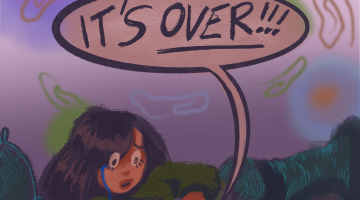The idea of “pay for play” in collegiate athletics is becoming a more controversial topic in today’s sports culture as the National Collegiate Athletic Association becomes an even bigger business.
While it is easy to say now that college athletics are a big part of the way universities gain revenue, it wasn’t always like this. Before the advent of cable television and ESPN, collegiate sports were somewhat of a regional phenomenon. Of course, you still have the national powerhouses of Notre Dame, University of Southern California, Oklahoma, Ohio State and Texas, but for the most part, many universities were limited to their region of the country for game play. Post-ESPN, the coverage of collegiate athletics has increased tremendously, and so have the paydays. Although many institutions do generate millions of dollars in revenue, it is the athletes themselves who are becoming the household names. Although for every Johnny Manziel and Jabari Parker there are thousands of other athletes who go unnoticed.
For the most part, the idea of pay for play is unrealistic for many schools. It boils down to three reasons: 1) the large schools are only a small part of the whole, 2) smaller schools do not have the budgetary power to pay for their athletes and 3) the talent gap will continue to widen through this process.
For instance, at an institution like the University of Nevada, Reno, there are the notable NFL and NBA successes of Colin Kaepernick and JaVale McGee, but, as previously mentioned, they are only a small portion of these athletes that have gone onto post-collegiate stardom. In this year’s NBA draft, the University of Kentucky will have at least four athletes who will be drafted as compared to the Wolf Pack, which will possibly only have one.
Of course, many collegiate coaches (especially in football or basketball) are paid handsomely for their work at many top tier institutions (according to USA Today, Alabama’s Nick Saban is paid $5,395,852 annually), but it is ultimately the athletes that do the work on the field. While there will always be those Cinderella teams that make a run at immortality, the big schools will be consistently more successful week-in and week-out, thanks to their budgets. Paying these athletes will continue to widen the talent gap between the mid-major powers — essentially paying these athletes as mercenaries for their schools. It would become an even bigger arms race between the top-tier institutions that will ultimately phase out the smaller schools. It is especially inconceivable at a school like Nevada, at which the athletic budget is 10th out of 11 other schools in the Mountain West.
There will always be the high profile examples over time of many college teams becoming the face of their respective schools. The University of Michigan’s “Fab Five” were a cultural phenomenon in the early 1990s by uniting hip-hop music and college basketball. The Miami Hurricanes from the 1980s to 1990s combined brashness and talent to become a dynasty. Finally, the University of Houston rode the “Phi Slama Jama” tandem of Hakeem Olajuwon and Clyde Drexler who helped to innovate the “above the rim” style of play that is commonplace in today’s NCAA game. While all of these teams were from various parts of the country, they had one thing in common: They were never paid, at least not legally by NCAA standards.
The times are changing, and there might one day be a solution to compensating athletes who do as much for their school as their revenue streams would indicate, but for now, paying athletes is a pipe dream.
The Nevada Sagebrush editorial staff can be reached at choline@sagebrush.unr.edu.










